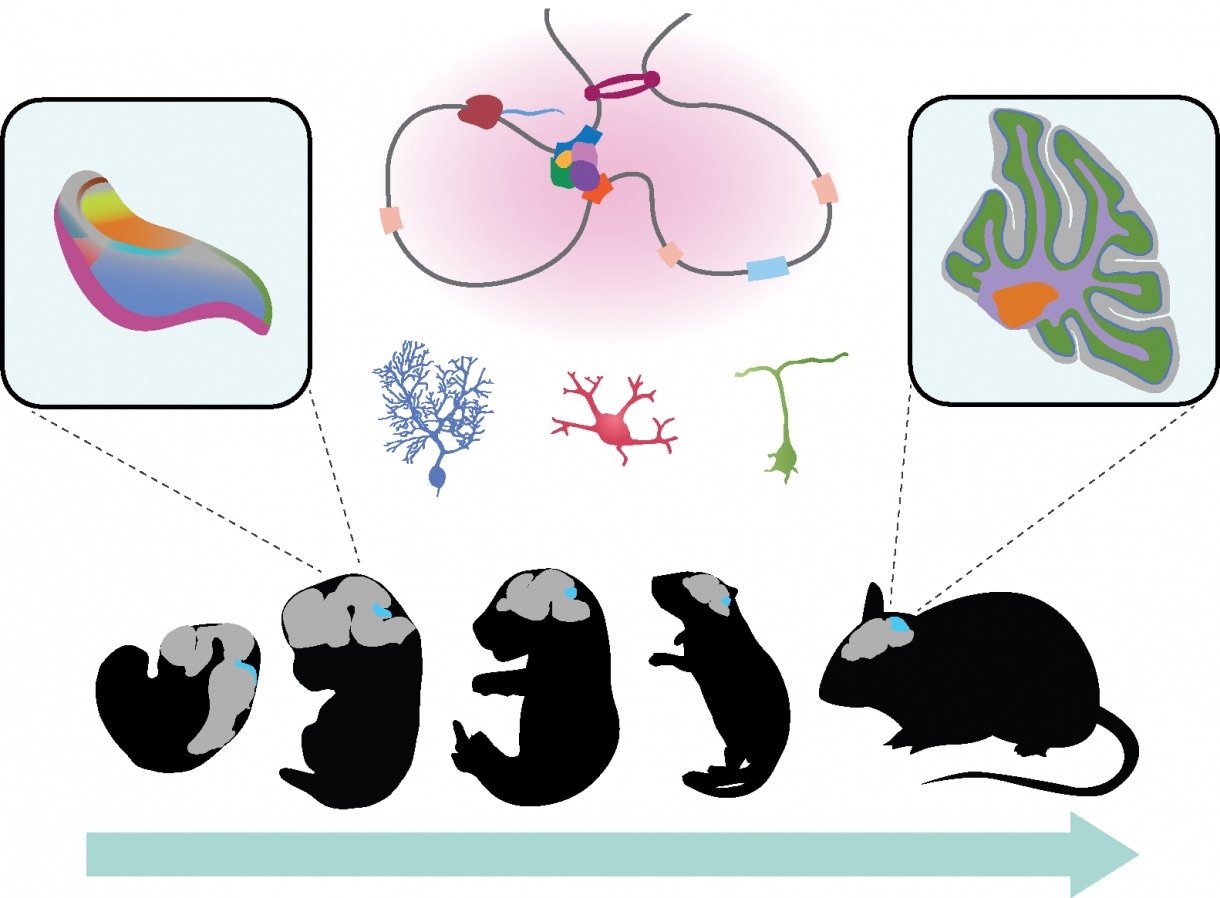The mammalian cerebellum has been linked almost exclusively with motor control for a long time; however, current research shows that it also contributes to numerous higher brain functions.

Atlas of genetic control elements in the cerebellum: most control elements are specific for individual cell types and development stages. Image Credit: Research group Professor Dr Henrik Kaessmann.
A team of international researchers headed by Prof Dr Henrik Kaessmann from the Center for Molecular Biology of Heidelberg University (ZMBH) currently decoded the genetic programs that control the development of cerebellar cell types before and after birth.
The molecular biologists analyzed data from the mouse cerebellum with corresponding data from the opossum, disclosing fundamental gene regulatory networks that might have already developed in the early stage of mammalian evolution more than 160 million years ago. The research was performed in close partnership with Prof Dr. Stefan Pfister of the Hopp Children’s Cancer Center Heidelberg (KiTZ).
The formation of mammalian organs is governed by the finely tuned activation and complex interaction of numerous different genes—also called gene expression networks.
Although developmental gene expression in the cerebellum has already been studied relatively well, its genetic control has remained elusive.”
Dr Mari Sepp, Postdoctoral Researcher, Heidelberg University
Mari Sepp does postdoctoral research in Prof Henrik Kaessmann’s “Functional evolution of mammalian genomes” research group.
In this research, scientists mapped the control elements of all active genes over the entire developmental period of the cerebellum in mice, at the cellular level. They employed sophisticated single-cell sequencing techniques for this mission.
Based on the information and bioinformatic analysis techniques, the researchers were able to decode the regulatory programs that control the gene expression networks of all cells and thereby the development of the cerebellum.
The scientists recognized more than 200,000 control elements, most of which are greatly specific for individual cell types and development stages. But some of these elements are activated in multiple cell types, mostly in the early stages of development.
To achieve a greater picture of the evolution of these gene regulatory programs, the scientists matched their results from the mouse with corresponding data from the opossum—a marsupial that shares a common evolutionary ancestor dating back nearly 160 million years with mammals like humans or mice.
Professor Kaessmann says that this comparison showed a temporal pattern that is shared between different cell types.
The gene regulatory programs of each cell type deviate more between species as development progresses.”
Ioannis Sarropoulos, Doctoral Researcher, Heidelberg University
Ioannis Sarropoulos pursues doctoral research in Henrik Kaessmann’s research group.
The scientists elucidate that, at the level of individual cell types, these results provide more support to a groundbreaking hypothesis on embryonic development from the 19th century—the Baltic German naturalist Karl Ernst von Baer (1792–1876) noted that the embryos of various types of vertebrates are hard to distinguish from one another the younger they are, indicating progressive divergence in the development of vertebrate embryos.
Source:
Journal reference:
Sarropoulos, I., et al. (2021) Developmental and evolutionary dynamics of cis-regulatory elements in mouse cerebellar cells. Science. doi.org/10.1126/science.abg4696.